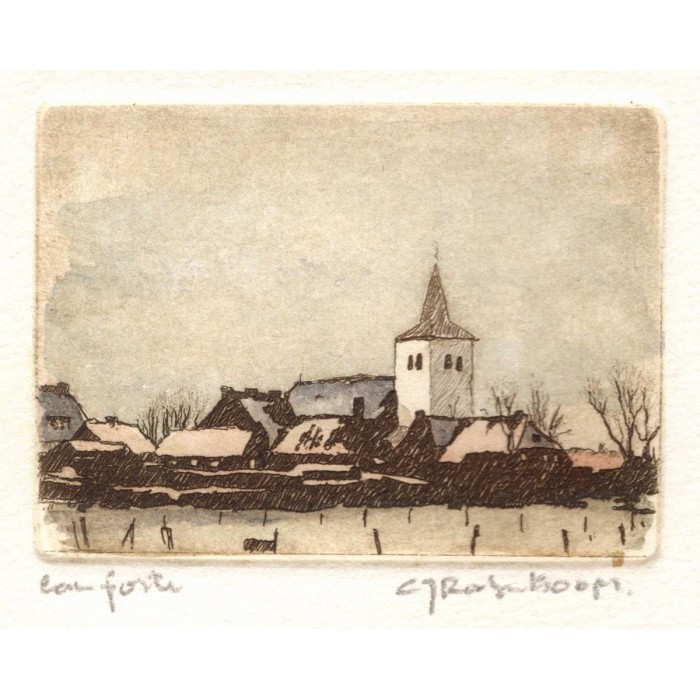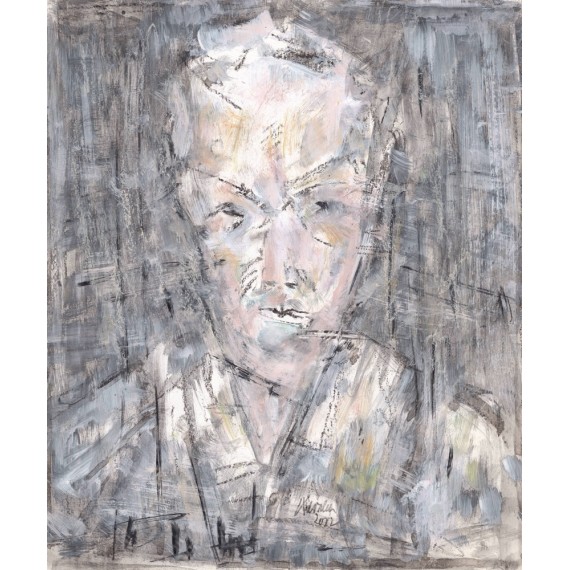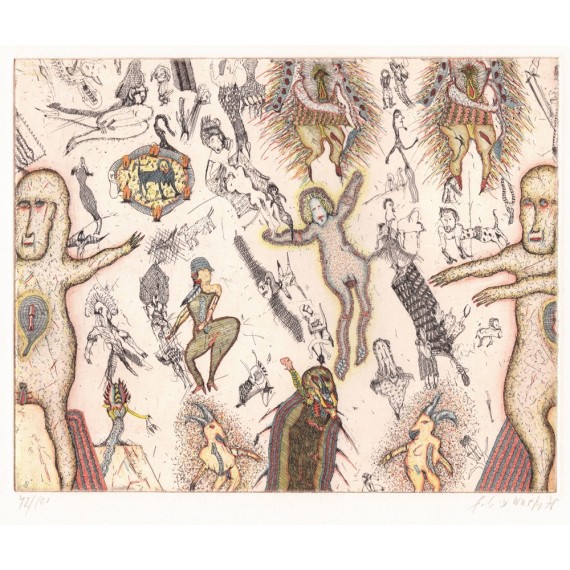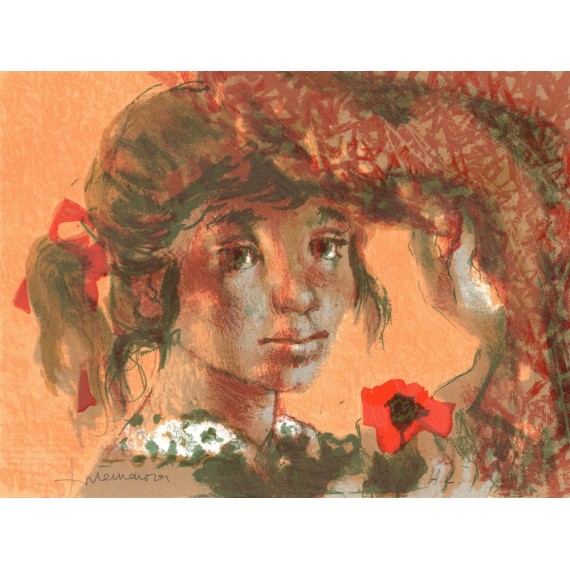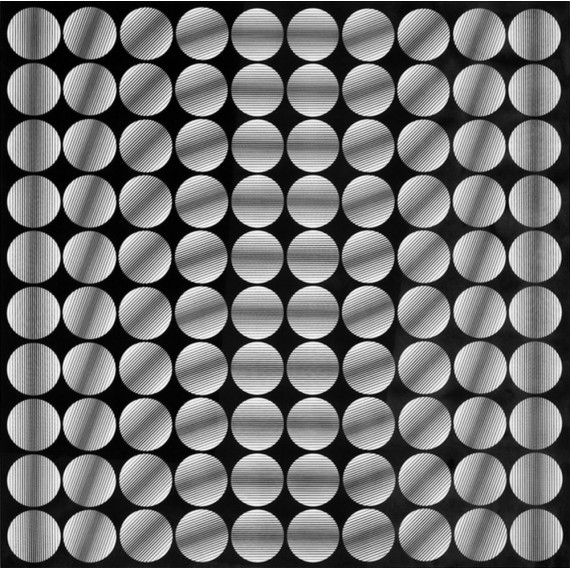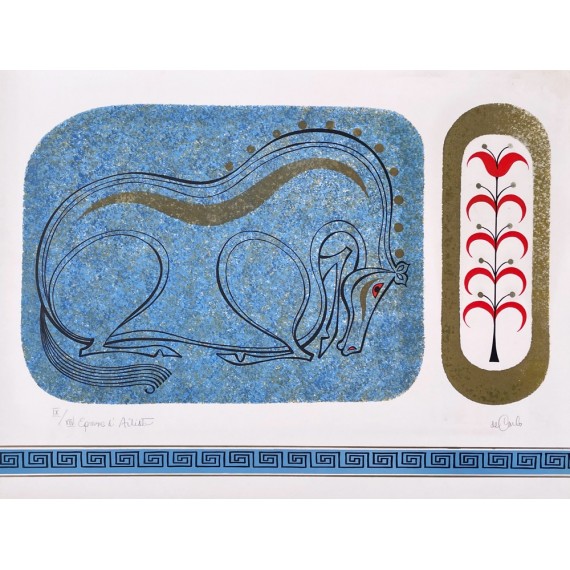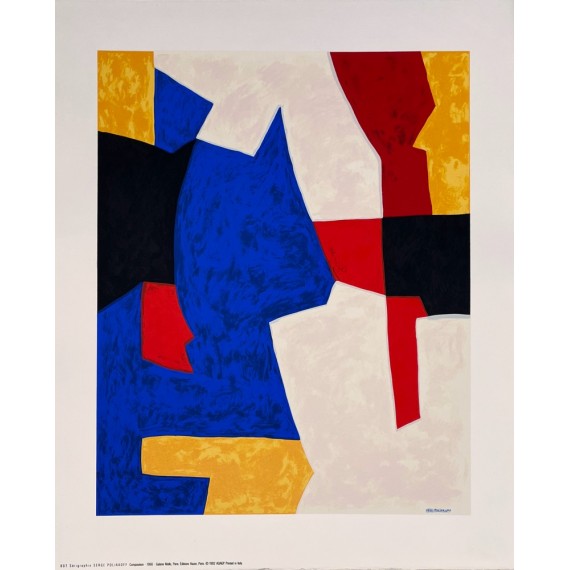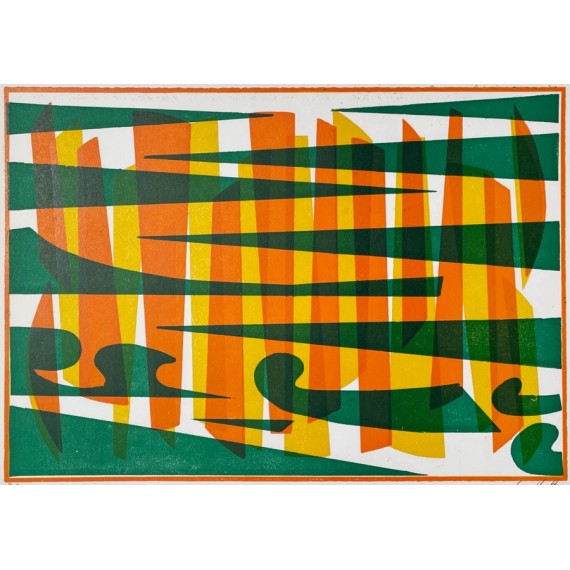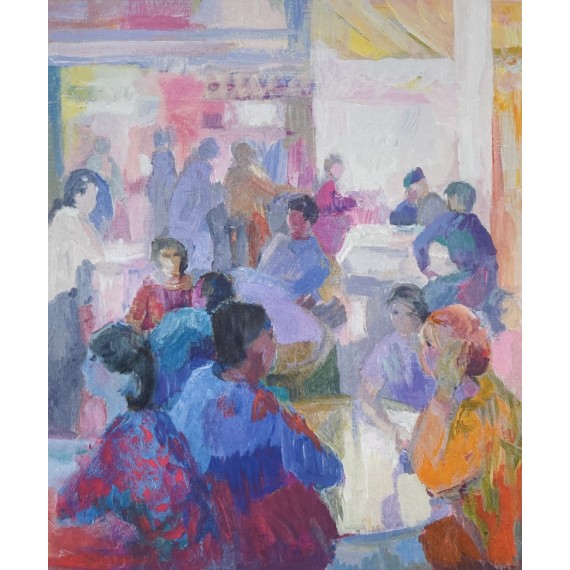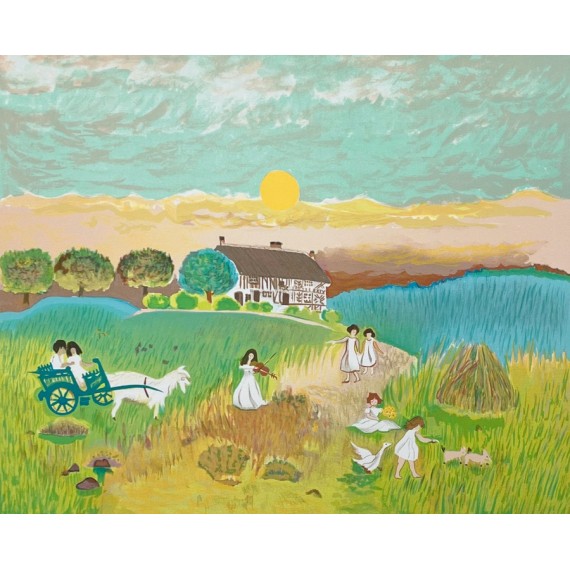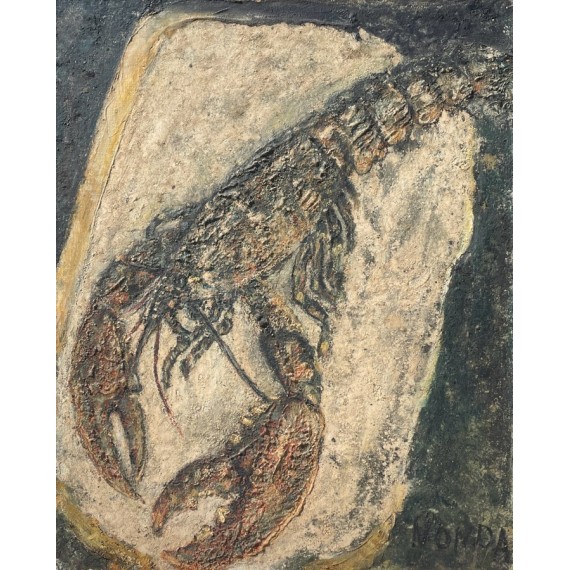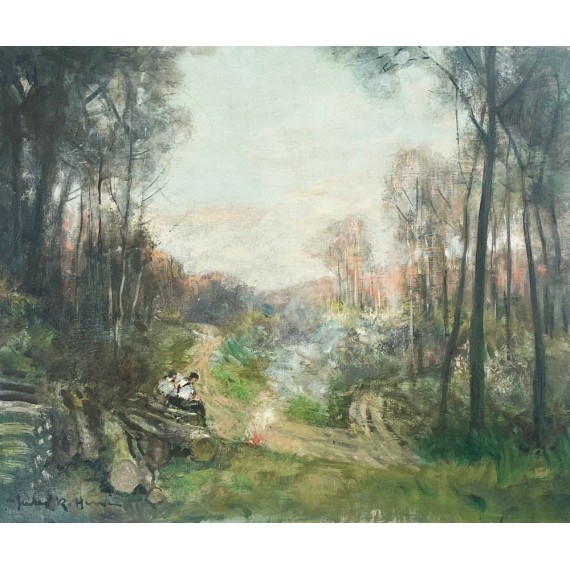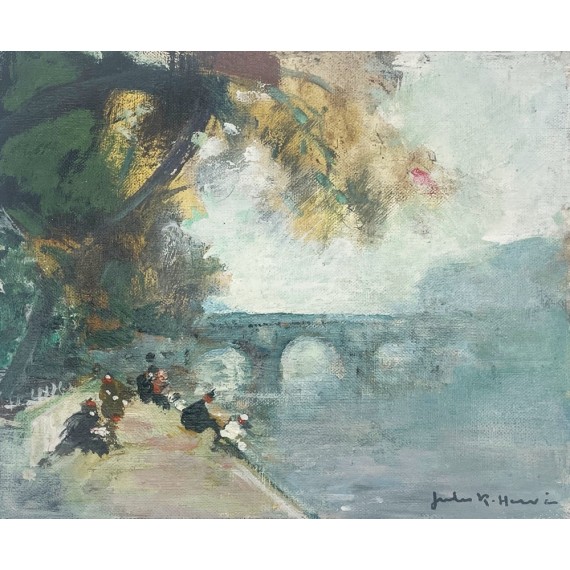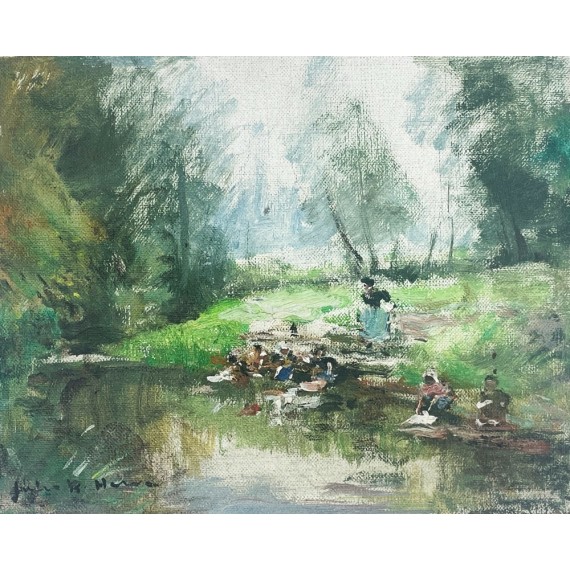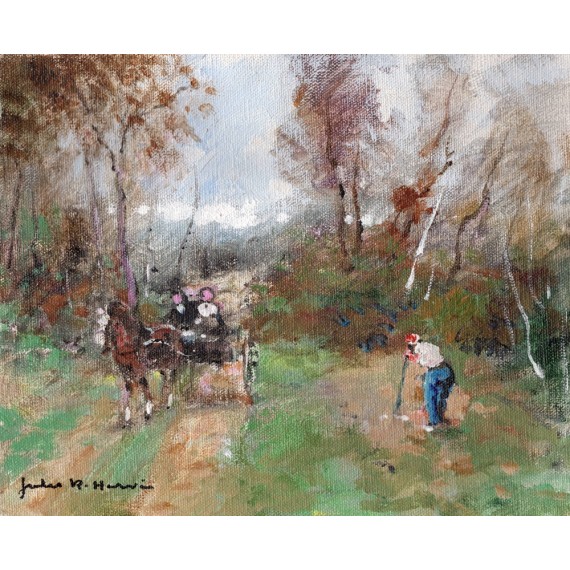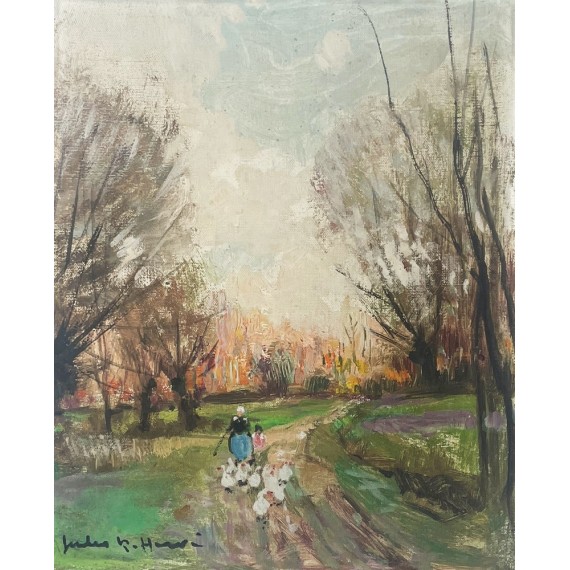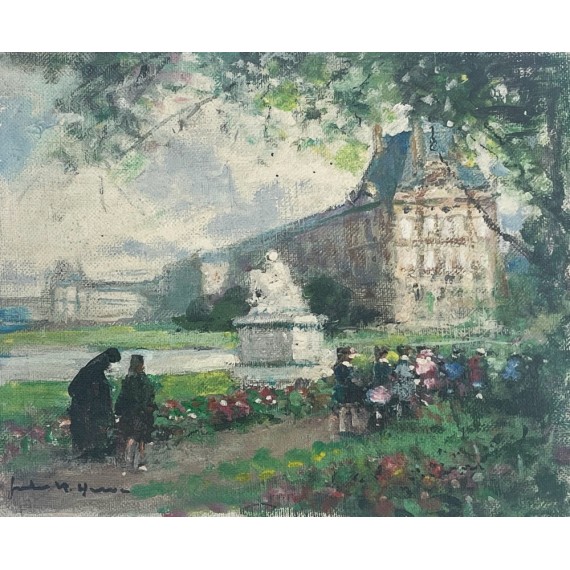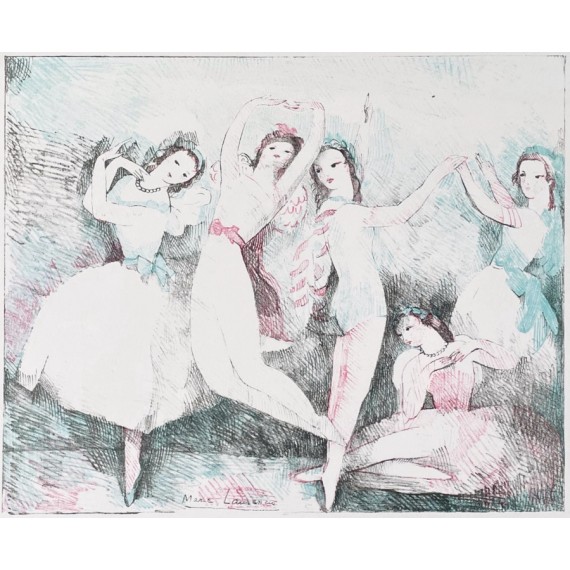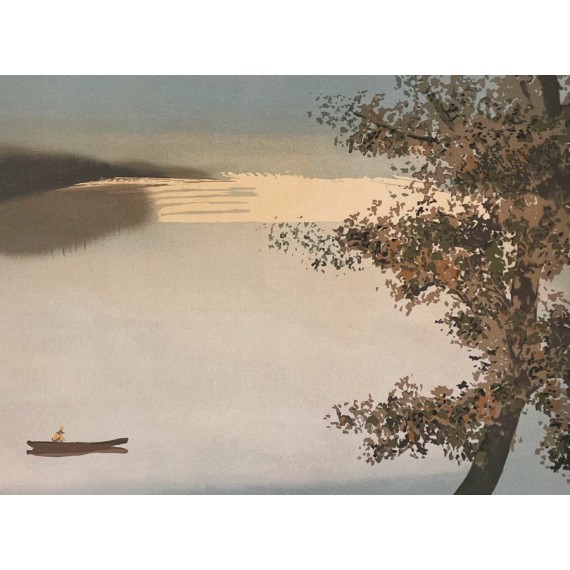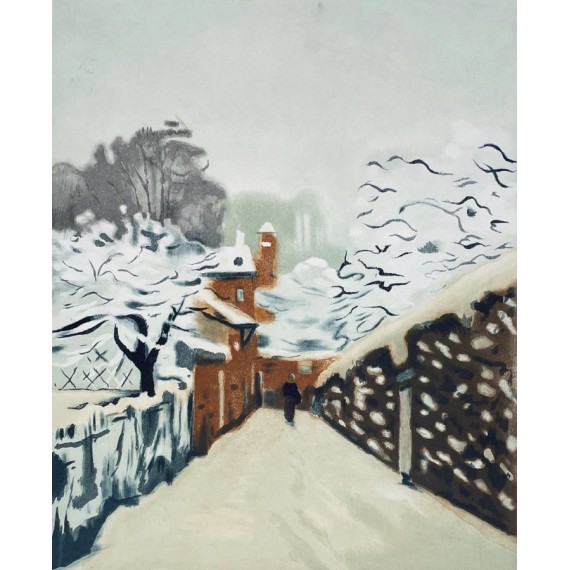Title: The Village Under Snow
Technique: Original color etching
Plate dimensions: 4.5 × 6 cm
Sheet dimensions (with margins): 14.5 × 14.5 cm
Signature: Hand-signed in the lower right
Estimated date: 20th century
Artist: Unidentified (signature illegible or not listed)
In The Village Under Snow, the artist distills a striking, almost silent atmosphere into just a few square centimeters, turning the landscape into a poetic miniature. The work is built upon a meticulously structured composition: a motionless village, dominated by a church with pale walls and a pointed steeple, stands out against the pallor of a winter sky. The fineness of the line, paired with extremely subtle coloring, creates a visual haze, as though frost itself had imprinted upon the plate.
The graphic treatment reveals a masterful economy of means: the hatched rooftops and delicately washed color fields aim not for virtuosity, but for the precision of diffused light. The limited palette—bluish greys, muted browns, soft pinks along the horizon—reinforces this sense of restraint. The emptiness of the foreground, marked only by a few vertical lines suggesting fences or frostbitten grasses, heightens the impression of winter stillness. It is a visualized silence, a pause in the rhythm of things.
The small plate size in no way diminishes the image’s evocative power. On the contrary, it invites close, almost intimate contemplation—like gazing at a memory inside a box. This sense of scale recalls the practices of Japanese printmaking or certain Flemish miniatures, where the gaze lingers slowly, with care.
This color etching bears witness to a rare pictorial sensitivity within the art of intaglio, and humbly aligns itself with the tradition of landscape printmakers who, through limited means, knew how to suggest the infinite.

